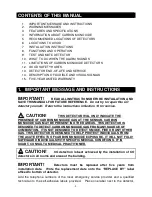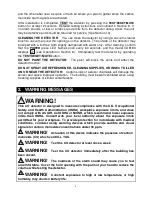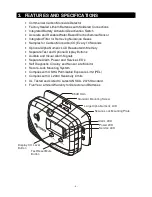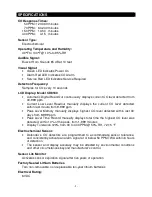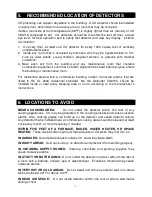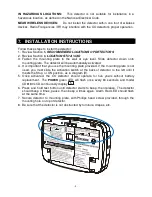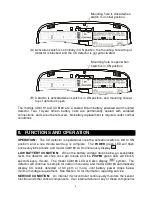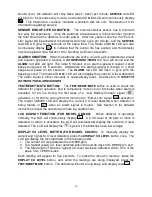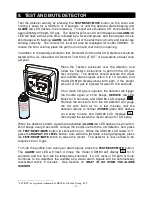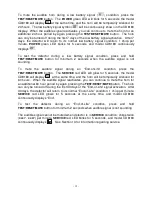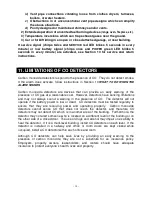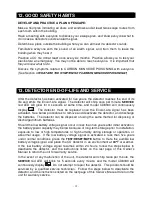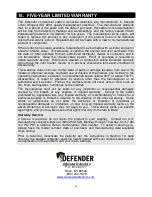
- 7 -
5. RECOMMENDED LOCATION OF DETECTORS
CO poisoning can happen anywhere in the building. A CO detector should be installed
on every floor, and inside or near every area or room that may be occupied.
Carbon monoxide at room temperature (68
o
F) is slightly lighter than air (density of CO
0.96716 compared to air). CO detectors should be mounted five feet off floor, around
eye level, for best operation and to easily test detector and view any display. Install a
CO detector:
1. On every floor, at least one CO detector for every 1000 square feet of vertically
unobstructed space.
2.
Inside any room that is occupied by someone who may be hypersensitive to CO,
such as older adults, young children, pregnant women, or persons with medical
conditions.
3. Near each exit from the building and any maintenance room that contains
combustion equipment, such that an alarm signal will be heard before anyone enters
the building or maintenance room.
For residential areas within a commercial building, carbon monoxide alarms that are
listed to the UL 2034 residential standard, like the Defender CA6150, should be
installed inside or near every sleeping area or room, according to the manufacturer’s
instructions.
6.
LOCATIONS TO AVOID
NEAR A COOKING AREA:
Do not install the detector within five feet of any
cooking appliances. CO may be generated in the cooking process and cause nuisance
alarms. Also, cooking grease can build up on the detector and cause detector failure.
Any detector that is installed near a commercial cooking area should be cleaned at least
once every month, or more frequently if needed.
WITHIN FIVE FEET OF A FURNACE, BOILER, WATER HEATER, OR SPACE
HEATER:
These devices often spill out small amounts of CO when they first turn on.
IN GARAGES:
Automobile exhaust contains CO and will activate alarm.
IN DUSTY AREAS:
Dust can build up on detector and prevent it from working properly.
IN CLEANING SUPPLY ROOMS:
Cleaning chemicals and painting supplies may
cause nuisance alarms.
IN UTILITY OR BATH ROOMS:
Do not install the detector inside or within three feet of
a room with a bathtub, shower, spa or washer/dryer. Excessive moisture may cause
nuisance alarms.
IN VERY HOT OR COLD AREAS:
Do not install unit onto any exterior wall or in areas
which are below 40
o
F or above 100
o
F.
IN DEAD AIR SPACE:
Do not install detector within one foot of where wall meets
ceiling or floor.


